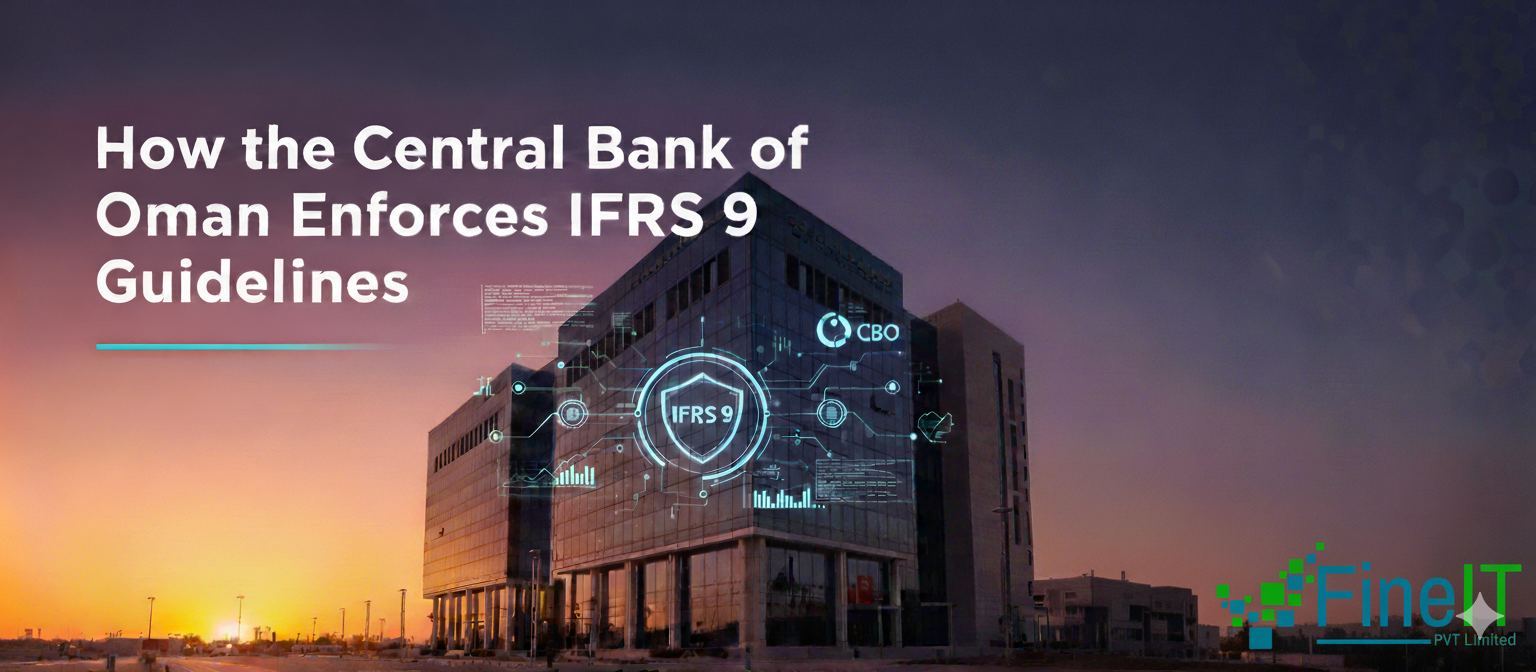The Central Bank of Oman (CBO) plays a pivotal and proactive role in safeguarding the stability and integrity of the Sultanate’s financial sector. A cornerstone of this regulatory oversight is the mandatory enforcement of the International Financial Reporting Standard 9 (IFRS 9), “Financial Instruments,” for all licensed banks and financial institutions. IFRS 9 fundamentally shifted the accounting landscape from the reactive “incurred loss” model to a forward-looking Expected Credit Loss (ECL) model.
The CBO’s enforcement strategy moves beyond mere adoption, focusing on ensuring a high-quality, consistent, and prudent application of this complex standard across the Omani financial landscape.
1. Regulatory Mandate and Foundational Framework
The foundation of the CBO’s enforcement lies in its official circulars and regulatory frameworks, most notably Circular BM 1149 (issued in 2017), which mandated IFRS 9’s implementation. These documents are not just endorsements of the global standard but are prescriptive guidelines tailored to the Omani banking environment.
The key regulatory mandates for all licensed entities include:
- Mandatory Compliance: IFRS 9 is obligatory for all conventional and Islamic banks, as well as finance and leasing companies (FLCs) operating in Oman.
- Classification and Measurement: Institutions must clearly articulate and document their business models for managing financial assets (e.g., Hold to Collect or Hold to Collect and Sell) and apply the Solely Payments of Principal and Interest (SPPI) test. This determines the subsequent measurement category: Amortised Cost, Fair Value through Other Comprehensive Income (FVOCI), or Fair Value through Profit or Loss (FVTPL).
- Enhanced Disclosure: The CBO enforces enhanced transparency requirements, compelling banks to provide detailed disclosures regarding their IFRS 9 assumptions, models, and the resultant impact on their financial statements and regulatory capital.
2. Focus on the Expected Credit Loss (ECL) Model
The core of IFRS 9 is the ECL impairment model, which requires financial institutions to provision for credit losses much earlier in the credit cycle by classifying assets into three stages:
| Stage | Credit Risk Change | Provisioning Horizon | Interest Calculation |
| Stage 1 | No significant increase since origination | 12-month ECL | Gross carrying amount |
| Stage 2 | Significant increase since origination (but not credit-impaired) | Lifetime ECL | Gross carrying amount |
| Stage 3 | Credit-impaired (Default has occurred) | Lifetime ECL | Net amortised cost |
The CBO’s enforcement efforts are heavily concentrated on ensuring the accuracy and robustness of these calculations:
- Model Validation and Back-Testing: The CBO requires robust governance frameworks for the ECL models. Banks must regularly validate and back-test their complex statistical models to ensure they are accurate, reliable, and fit for purpose. This includes reviewing the Probability of Default (PD), Loss Given Default (LGD), and Exposure at Default (EAD) parameters.
- Inclusion of Forward-Looking Information: A critical part of the ECL model is the incorporation of reasonable and supportable macroeconomic forecasts—specific to the Omani economy and global trends—into the calculation. The CBO mandates that these judgmental inputs are adequately documented and justified to avoid management bias.
- Data Integrity and Completeness: ECL calculations are data-intensive. The CBO insists on high standards for data quality, requiring financial institutions to maintain complete, granular historical data to support the statistical modeling of expected losses.
3. Prudential Filters and Capital Management
Recognizing the potential for IFRS 9 to cause a significant one-off increase in loan loss provisions (and thus an impact on regulatory capital), the CBO, like many global regulators, provided a measure of transitional relief.
- Transitional Capital Relief: To ease the financial burden and prevent undue pressure on capital adequacy ratios upon adoption, the CBO allowed for transitional arrangements for including a portion of the IFRS 9’s initial impact (increase in provisions) on Common Equity Tier 1 (CET1) capital. This “prudential filter” was a mechanism to smooth the impact of the standard’s adoption on a bank’s Capital Adequacy Ratio (CAR), phasing out the capital relief over a defined period.
- Prudential Provisioning Norms: Historically, the CBO maintained an approach where banks had to meet not just the IFRS 9 provisions but also stricter, CBO-specific prudential provisioning norms. If the CBO’s norm resulted in a higher provision, the difference (net of tax) had to be transferred from retained earnings to a non-distributable “Impairment Reserve,” ensuring capital buffers remained strong.
Conclusion
The Central Bank of Oman’s enforcement of IFRS 9 is a stringent, risk-focused process. By issuing detailed regulations, mandating robust model governance, insisting on high-quality data, and maintaining a rigorous supervisory review process,IFRS 9 in the CBO ensures that the Omani banking sector’s financial reporting remains resilient, transparent, and aligned with the highest global standards. This meticulous oversight transforms IFRS 9 from a mere accounting requirement into a vital tool for preemptive risk management and long-term financial stability in the Sultanate.
At FineIT, we specialize in helping Omani financial institutions navigate the complexities of IFRS 9 implementation and compliance — from ECL model development and validation to regulatory reporting alignment and data governance.
✅ Our IFRS 9 services include:
- ECL model design, calibration, and back-testing
- Data readiness assessments and gap analysis
- IFRS 9 governance framework setup
- Regulatory and CBO compliance support
- Comprehensive training and documentation
Get in touch with our IFRS 9 specialists to ensure your institution not only complies but also strengthens its financial resilience under the CBO’s regulatory expectations.



